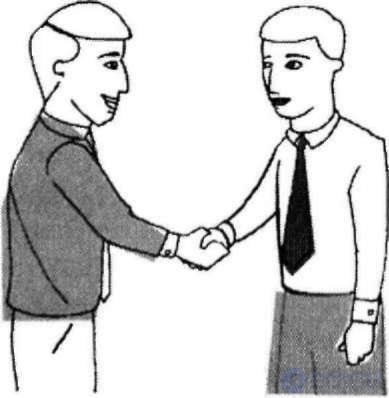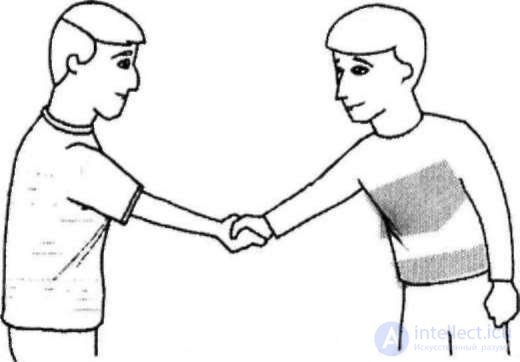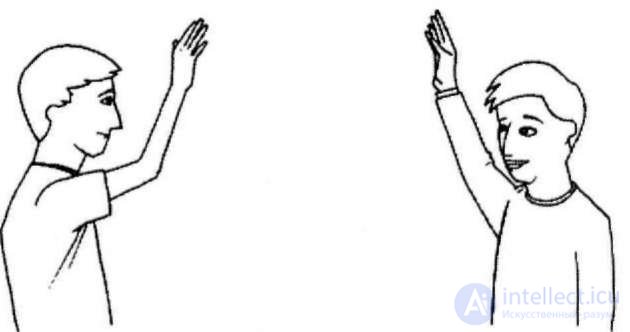As already mentioned, the size of personal space is largely dependent on the density of the population in the area where the person lives. People who live in sparsely populated areas usually need more personal space than those who live in overcrowded cities. Observe how a person stretches his hand for a handshake, and you will immediately understand where he lives. City dwellers usually keep the traditional 46-centimeter “bubble” around them. Accordingly, they stretch their arms so that the interlocutor does not come closer to them than 46 cm.

Greet two men living in the city. Their hands are found at a distance of 46 cm from the body of each of them. With this arrangement, the hands of the interlocutors are found on neutral territory. People living in sparsely populated countryside are regarded as an intimate zone up to one meter away. It is this distance that they are trying to maintain when shaking hands.

People living in rural areas greeted in such a way that the distance to them was not less than a meter. The villagers stand firmly on the ground with both feet on the ground and lean forward. The city dweller will almost certainly take a step forward. Those who live in a deserted area have even more personal space. It can be up to six meters. Such people prefer not to shake hands, but to be located away from the interlocutor and simply wave to him.

People living in uninhabited areas always prefer to keep their distance. This information is especially useful for people selling agricultural equipment while living in cities. Taking into account the fact that the farmer’s private space is 1-2 meters, the handshake for him will be an aggressive invasion. Naturally, in such a situation he will have a negative or defensive reaction. Experienced sellers of such equipment are well aware that the easiest way to get a rural resident to him is to bend over for a handshake or simply to greet him with a wave of his hand.



Comments
To leave a comment
Body language
Terms: Body language